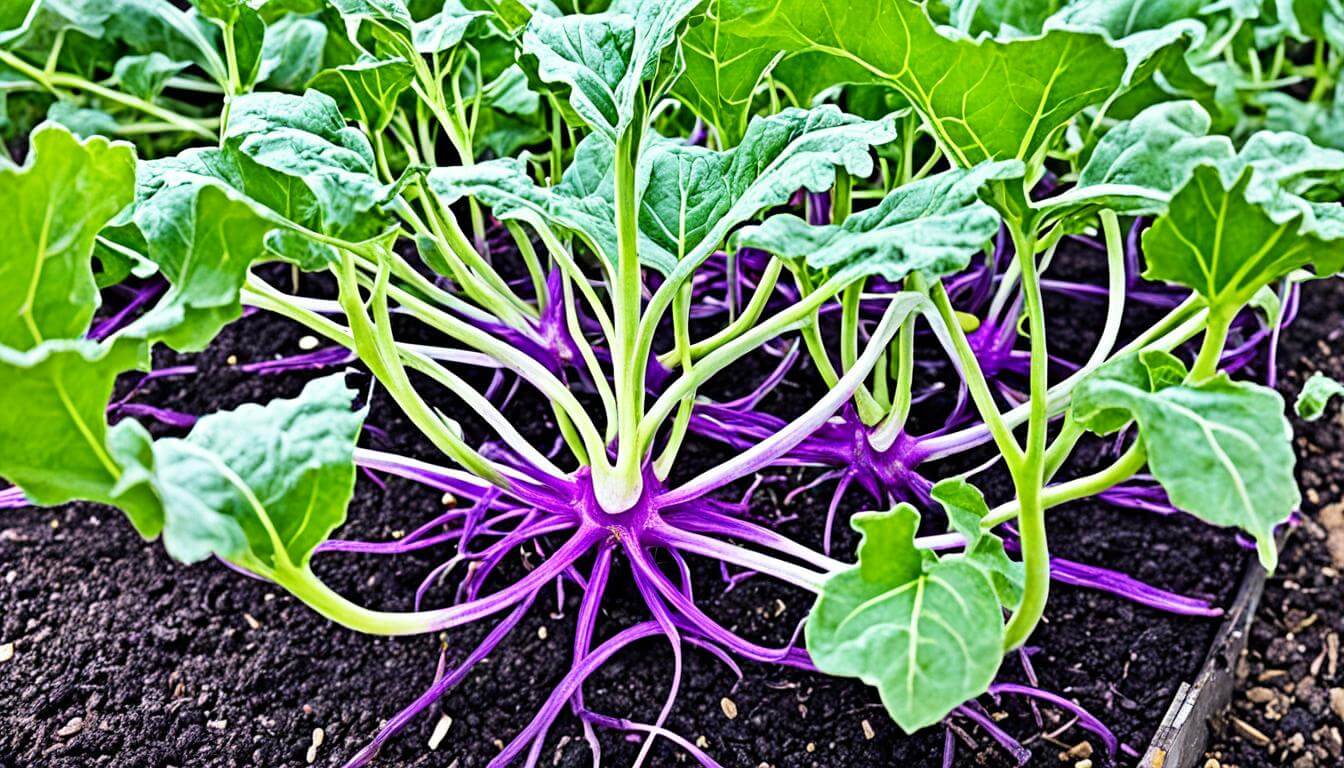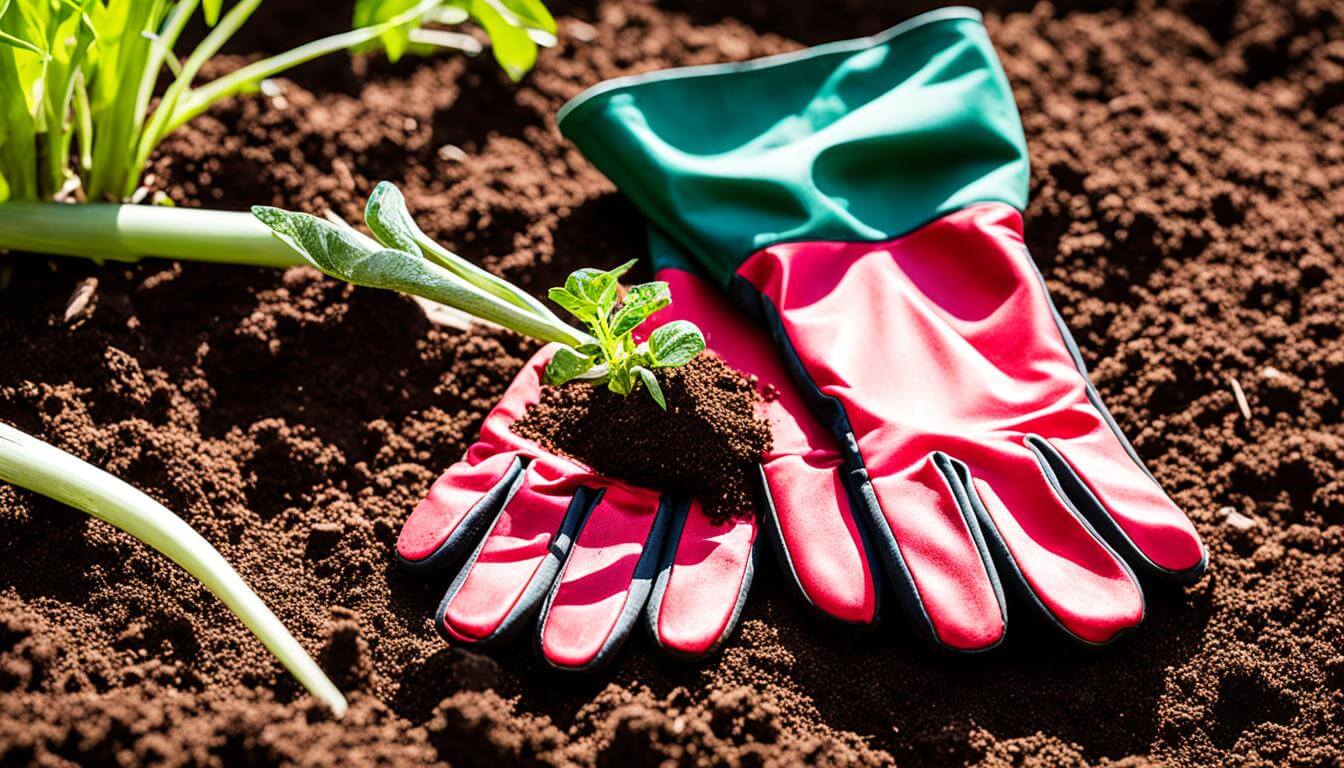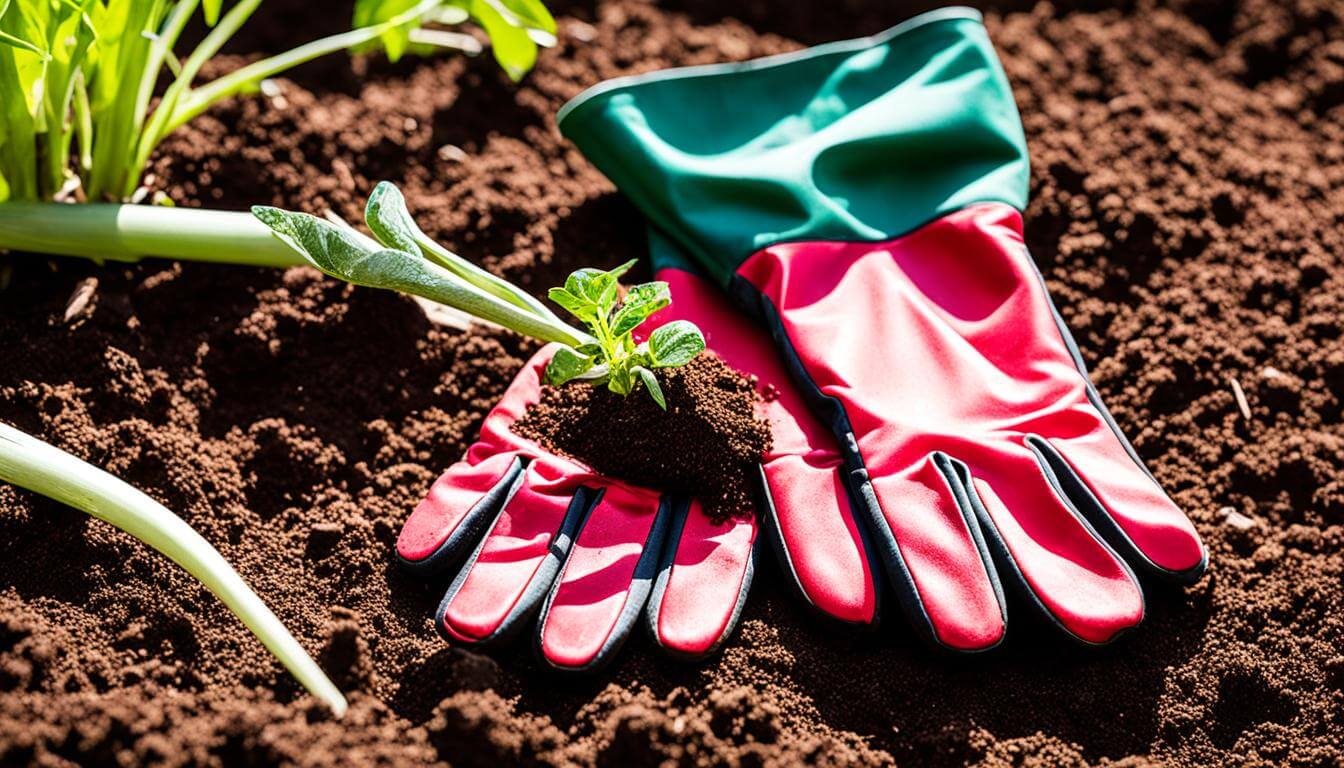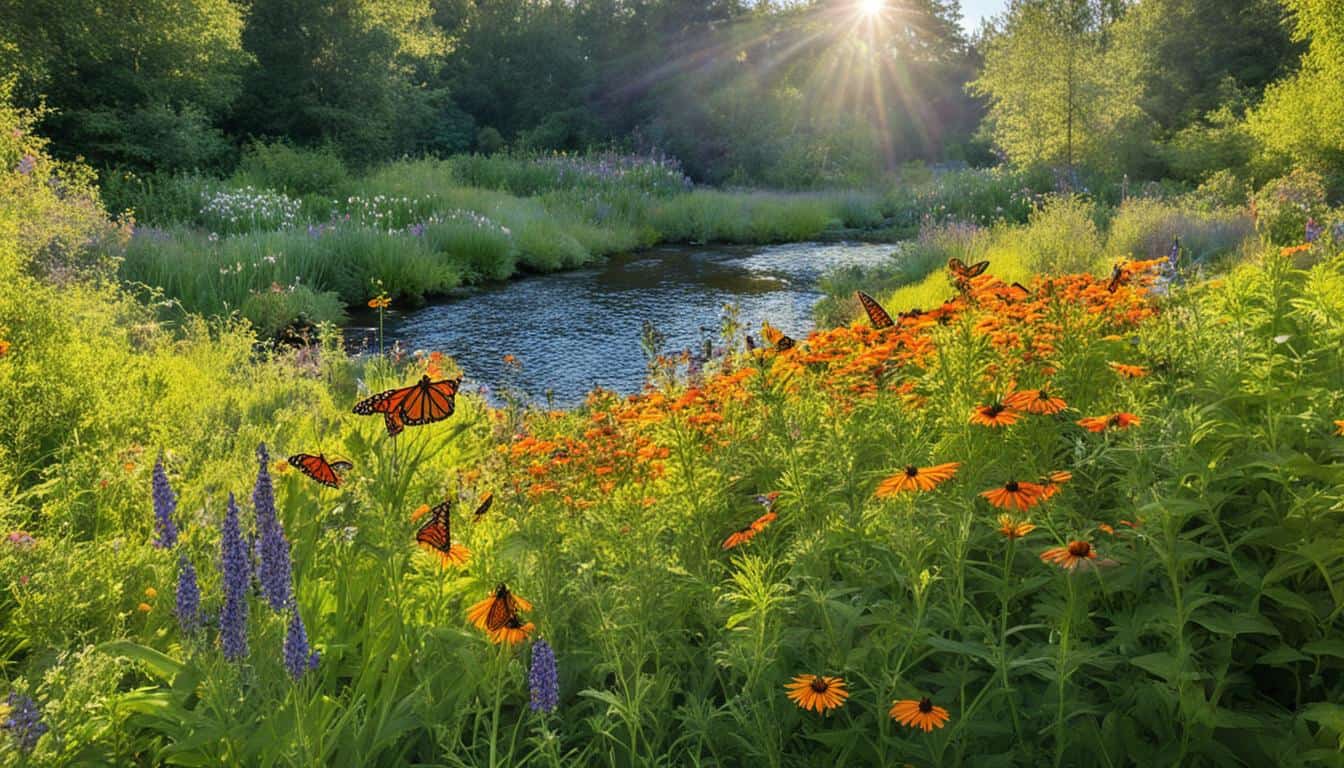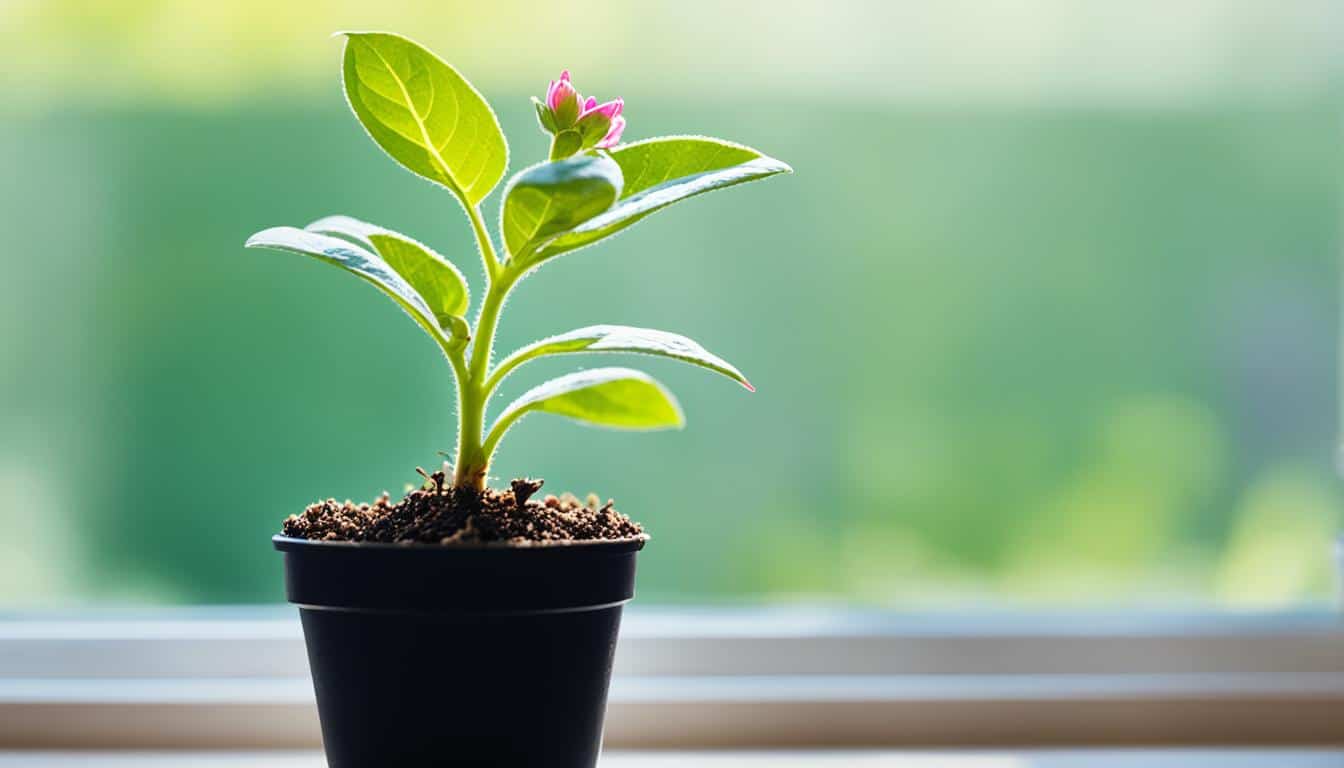As an avid vegetable gardener, I've always been drawn to the more unique additions to the garden's palette, and the Purple Vienna Kohlrabi is one such gem. Known for its striking color and delectable white flesh, this cool-weather crop can transform your garden's aesthetic and your table's flavor profile. In early spring, the gentle stirrings of life beneath the soil beckon, making it the perfect time to grow kohlrabi from seed. Utilizing Gardeners Basics' kohlrabi seeds, I want to share with you the beauty and ease with which you can bring the vibrant hue of Purple Vienna into your garden. Let's learn how to grow purple Vienna kohlrabi from seed and grow!
Heirloom seed starting might seem daunting, but it's a simple, rewarding process that heralds the beginning of the growing season. As a cool-weather crop, kohlrabi is ideal for early planting and offers a taste and texture superior to many white-fleshed vegetables. Join me in exploring the steps to successfully cultivating your own Purple Vienna kohlrabi, and get ready to enjoy the fruits (or, rather, vegetables) of your labor!
Key Takeaways
- Start your journey to grow kohlrabi during the early spring for a robust harvest.
- Learn why Purple Vienna stands out among cool weather crops with its unique color and taste.
- Discover the optimal seed-starting techniques for nurturing kohlrabi seeds.
- Understand how to capitalize on cool temperatures and the change of seasons to succeed in your gardening endeavors.
- Grasp why Gardeners Basics' kohlrabi seeds are the go-to choice for gardeners seeking quality and variety.
Purple Vienna Kohlrabi Seeds

$2.49
Purple Vienna Kohlrabi Seeds - Heirloom, Non-GMO, Non-Hybrid, Open-Pollinated Grow your own delicious and nutrient-packed Purple Vienna Kohlrabi with our premium heirloom seeds! Known for its vibrant purple bulbs and crisp, flavorful flesh, this unique cool-season vegetable is perfect for… read more
Purple Vienna Kohlrabi Basics
- Days till maturity: Purple Vienna Kohlrabi typically takes about 45 to 60 days to reach maturity.
- Planting depth: Seeds should be planted 1/4 to 1/2 inch (6 to 13 mm) deep.
- Plant spacing: Space plants about 6 inches (15 cm) apart in rows 12 to 18 inches (30 to 45 cm) apart.
- Days to germination: Germination typically occurs in 5 to 10 days under ideal conditions.
- Indoors or Direct Sown: Kohlrabi can be started indoors 4 to 6 weeks before the last frost date or sown directly in the garden a little before the last frost date.
- Full Sun or Partial Shade: Kohlrabi prefers full sun but will tolerate partial shade.
- When to harvest: Harvest kohlrabi when the bulbs are 2 to 3 inches (5 to 7.5 cm) in diameter.
- How tall does the plant get? Purple Vienna Kohlrabi typically grows to about 12 to 18 inches (30 to 45 cm) tall.
- How wide does the plant spread? It can be about 6 to 12 inches (15 to 30 cm) wide.
- Native: Kohlrabi is native to Europe.
- Family: Purple Vienna Kohlrabi is part of the Brassicaceae family, commonly known as the mustard or cabbage family.
Understanding Purple Vienna Kohlrabi: Characteristics and Benefits
As we delve into the gardening world, certain crops stand out for their distinctive traits, and Purple Vienna kohlrabi is undoubtedly one of these. With its vibrant purple skin and lush white flesh, this variety adds visual appeal to your garden and offers many health benefits and diverse culinary uses.
What Makes Purple Vienna Kohlrabi Unique?
The allure of Purple Vienna lies in its stunning contrast of deep purple skin against the crisp white flesh nestled within. As a biennial, it thrives in cooler temperatures and can provide an eye-catching focal point in any vegetable patch. What sets it apart is its appearance and versatility in the kitchen, being perfect for both raw and cooked dishes.
Health Benefits of White Flesh Kohlrabi
A dive into the nutrition profile of white flesh kohlrabi reveals it's a powerhouse of vitamins and minerals. It is filled with vitamin C and dietary fiber and supports immune function and digestion, making it a smart addition to a healthy diet. Beyond its physical benefits, its unique taste—a turnip and mild radish blend—provides a delightful zing to salads and slaws.
Ideal Growing Conditions for Optimal Yield
Understanding the ideal growing conditions is key for those looking to maximize their harvest. Purple Vienna requires full sun exposure and tends to produce the best yield when planted after the last significant frost date. To encourage a healthy crop, companion planting with herbs and legumes can increase biodiversity and deter pests, creating a more robust garden ecosystem.
| Attribute | Description |
|---|---|
| Visual Appeal | Purple-hued skin with crunchy white flesh |
| Culinary Versatility | Suitable raw in salads or cooked in various dishes |
| Nutritional Content | High in vitamin C and fiber, low in calories |
| Growing Conditions | Requires full sun exposure and cool temperatures |
| Companion Plants | Benefits from proximity to herbs and legumes |
Whether you're planting for aesthetics, health, or culinary exploration, the Purple Vienna kohlrabi won't disappoint. Its ability to thrive under full sun, adaptability for recipe innovation, and utility in companion planting make it a fascinating and beneficial addition to any garden.
Preparation for Planting: Soil, Temperature, and Timing
As a dedicated gardener, my experience has taught me that the key to a successful harvest begins long before the seeds are sown. When I'm getting ready to sow the Purple Vienna Kohlrabi seeds in my garden, meticulous attention to soil conditions, soil temperatures, and the seasonal timing of planting is imperative. The groundwork for a thriving crop lies in these early stages, particularly as we approach the early spring. With this pre-planting strategy, I aim to harness the advantages of ideal soil temperatures and a supportive environment that caters to the needs of this unique vegetable, ensuring it basks under the full sun during its growth period.
Understanding the local frost date is crucial since it dictates when it's safe to plant outdoors without the risk of the seedlings being damaged by frost. For my region, this typically falls in early to mid-spring. I've learned that monitoring soil temperatures is equally important, as soil that is too cold can hinder germination and root development, while soil that is too warm can stress the plants and affect their growth.
By aligning the planting time with the soil's readiness to foster growth, we lay a healthy foundation for the seeds to develop into robust, fruitful plants.
I generally aim for soil temperatures to be consistently above 45°F (7°C) before I begin sowing kohlrabi seeds. This provides an environment conducive to growth while ensuring the roots can establish themselves without the impediment of residual cold. However, the sweet spot for soil temperature usually hovers around 50°F to 70°F (10°C to 21°C), which encourages optimal germination and root development.
- Soil condition: Loose, well-draining soil enriched with organic matter.
- Soil temperature: Ideally between 50°F to 70°F (10°C to 21°C) for best germination.
- Timing: Sow seeds a few weeks before the last frost date in early spring for a prosperous fall harvest.
- Sunlight: Position the planting area so that it receives full sun throughout the growing season.
To ensure I'm hitting the right timeline and environment for my Purple Vienna Kohlrabi garden, I conduct periodic soil temperature readings and refine the soil composition by integrating organic compost. This primes my garden to become a nurturing ground that welcomes the seeds and encourages strong growth under the full sun throughout the early spring and beyond to the fall harvest season.
This dedicated preparation is essential to achieving a bountiful harvest, and I always remind fellow gardeners of its importance. Remember that the success of your Purple Vienna Kohlrabi starts not at the first sign of a sprout but in the quality of the groundwork you lay before you even open your seed packets.
Starting Your Kohlrabi Seeds Indoors
As our focus shifts indoors during the early spring, there's something magical about beginning a garden on the windowsill. Seed starting indoors offers a head start to the growing season — and Purple Vienna Kohlrabi is an excellent candidate for this process. I'm here to guide you through each step, ensuring your vibrant green seedlings are garden-ready as the weather warms up. Let us give those delicate seeds the best possible foundation for life in our gardens.
Choosing the Right Soil and Containers for Seed Starting
Selecting the appropriate soil and containers is paramount for seed starting. The soil should be light and rich in organic matter to promote easy root growth — the kohlrabi seeds need an inviting place to sprout. I've had success with small biodegradable pots for containers, which can be transplanted directly into the outdoor garden, minimizing root disturbance.
- Soil: Sterile, nutrient-rich potting mix ideally suited for seed germination.
- Containers: Peat pots, plastic trays, or small containers with drainage holes.
- Depth: Press seeds an inch deep into the soil and lightly cover.
Managing Soil Temperatures and Light to Nurture Seedlings
Maintaining the right soil temperatures is vital for germination. I ensure the soil is warm enough, ideally between 65°F and 75°F, using a heat mat if necessary. But remember, light is equally crucial. Once the seeds have sprouted, provide your kohlrabi seedlings with plenty of indirect sunlight or use grow lights to simulate it, encouraging strong and healthy growth.
Subtle warmth and consistent light are the guardians of thriving seedlings.
- Temperature: Keep the growing medium within the ideal range for kohlrabi germination.
- Light: Place seedlings by a south-facing window or under grow lights to ensure adequate exposure.
When to Transplant Seedlings to Outdoor Garden
Transitioning your seedlings to the outdoor soil is a decisive moment in their journey. I look to do this after the last chance of frost has passed and the outdoor soil temperatures have stabilized, ensuring a smooth acclimation for the seedlings. It's a delicate balance — move them too early, and the lingering cold might shock them; too late, and the plants can become root-bound or stressed from being in small containers.
| Step | Details |
|---|---|
| Hardening Off | Begin 7-10 days before planting; gradually expose seedlings to outside conditions. |
| Transplant Timing | Transplant when daytime temperatures are consistently above 50°F. |
| Planting Process | Move seedlings to prepared garden beds, maintaining the original soil level around the stems. |
| Post-Transplant Care | Water adequately and provide some shade initially, if necessary, to prevent transplant shock. |
With patience and attention to these key aspects, your indoor seed-starting endeavor can set the stage for a lush, productive outdoor garden overflowing with the unique beauty of Purple Vienna Kohlrabi.
Outdoor Planting and Care for Kohlrabi
Transitioning from seed starting indoors to outdoor planting is a pivotal stage in the life of a kohlrabi plant. To successfully plant kohlrabi, understanding the particulars of soil preparation, seed depth, and aftercare is essential. Having carefully incubated the delicate seeds, we must place them in their natural habitat, where they can flourish under the full sun.
Initially, you must create a hospitable bed for your seedlings by ensuring the soil is loose, enriched, and well-drained. Mindfully sow seeds about an inch deep to foster optimal germination and provide each plant enough space to grow without crowding. This forethought in spacing facilitates adequate airflow and sunlight penetration, which are critical components in disease prevention and photosynthesis.
In the ensuing weeks, diligent care in weeding, watering, and monitoring kohlrabi plants is vital. Regular checks for pests and diseases will keep potential threats at bay. As the days pass and the plants mature, anticipation for the fall harvest grows.
Patience is a key virtue in gardening; respecting the 60 days days to maturity for a Purple Vienna kohlrabi allows each plant to reach its full potential, resulting in a bountiful and rewarding harvest.
The days to maturity can be influenced by weather conditions and soil quality. However, we gardeners can provide the best care following germination to encourage a successful fall harvest.
- Ensure the plants enjoy full sun for at least six hours daily.
- Maintain soil moisture regularly, even by watering, avoiding waterlogged soil.
- Thin seedlings are necessary to prevent competition and promote healthy growth.
- Use mulch to help retain moisture and control weeds.
- Based on soil test results, fertilize appropriately to support lush foliage and bulb formation.
- Monitor for pests, such as aphids and flea beetles, treating infestations swiftly.
As the plants inch closer to their 60-day mark, keep a keen eye on them. Harvest time can vary slightly, and gauging the bulb size can be a more accurate indicator of when to pluck the kohlrabi from the ground. An average Purple Vienna kohlrabi is ready to harvest when the bulb reaches around 2 to 3 inches in diameter. However, some may prefer slightly larger or smaller, depending on personal taste.
Gardening teaches us the delicacy of timing and the significance of seasonal cycles. With careful planning, constant supervision, and a touch of Mother Nature's grace, your efforts to plant kohlrabi and navigate their days to maturity will yield a vibrant, healthy addition to your fall harvest table.
Winter Seed Assortment | 8 Variety Pack
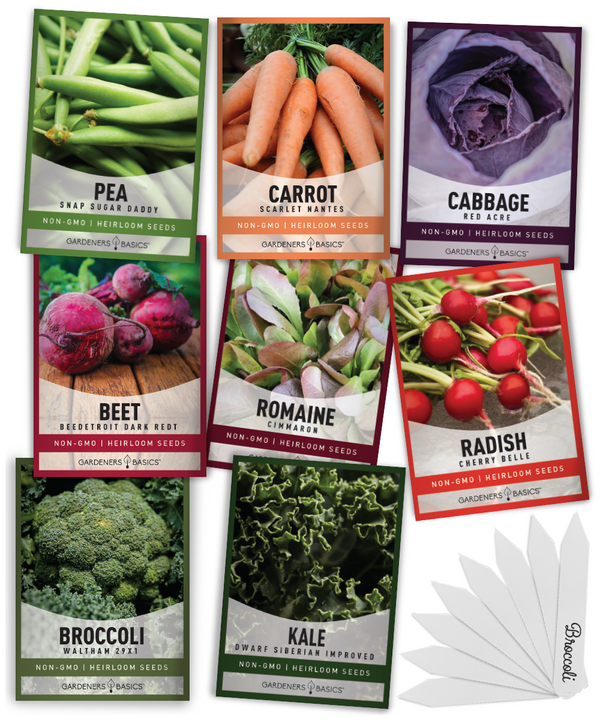
$15.95
The Ultimate Winter & Spring Vegetable Seed Assortment - 8 Vegetable Varieties Perfect for Cold Weather Introducing our 8 Winter Vegetable Seeds Variety Pack, a premium collection of heirloom, non-hybrid, open-pollinated, and non-GMO seeds perfect for growing your own nutritious and… read more
Conclusion - How To Grow Purple Vienna Kohlrabi From Seed
As we reach the culmination of our gardening guide, let's briefly revisit the pivotal steps to successfully grow kohlrabi, specifically the elegant and hardy Purple Vienna. This journey began with an introduction to the unique visual appeal and culinary delights of this particular cool-weather crop. Through diligent seed starting and attentive care, we have navigated the intricate path from seed to sprout and ultimately to thriving plants ready for the fall harvest.
Recap of Steps to Grow Kohlrabi
The process commenced with clearly understanding the ideal soil and climate conditions necessary to cultivate Purple Vienna kohlrabi. We then progressed to indoor seed starting, providing our seedlings with a controlled environment to protect against early spring frost. Adhering to the advice within this article, we ensured our kohlrabi seeds—sourced from the reputable Gardeners Basics—received ample sunlight and warmth, fostering the growth of robust young plants. Finally, the transition to outdoor gardening marked the nearing of a successful harvest, requiring continued care and watchfulness.
Expected Days to Maturity and Harvest Tips
For those eager to see the fruits of their labor, Purple Vienna kohlrabi typically requires 60 days to maturity. It's important to monitor the size of the bulb, harvesting when it reaches about 2 to 3 inches in diameter for the perfect blend of texture and flavor. Ensuring a bountiful yield extends beyond mere patience; it's the culmination of consistent tending and the ability to adapt to the nuances of each growing season.
Why Gardeners Basics Recommends Growing Purple Vienna Kohlrabi
Gardeners Basics stands by their kohlrabi seeds for sale, and Purple Vienna is a highlight within their collection. This variety has been selected for its robustness, distinctive color, and adaptability to various garden settings throughout the United States. Whether you're a seasoned gardener or just starting, the step-by-step guide provided in this article, coupled with Gardeners Basics' high-quality seeds, will ensure that you, too, can grow kohlrabi with confidence and enjoy a vibrant and delicious fall harvest.
FAQ - Growing Kohlrabi
How do I start growing Purple Vienna Kohlrabi from seed?
To start growing Purple Vienna Kohlrabi, start with high-quality kohlrabi seeds, such as those available from Gardeners Basics. Initiate seed starting in early spring, as this is a cool-weather crop. Sow the seeds in well-draining soil with appropriate moisture levels, and keep them in a location with consistent temperatures until they're ready to transplant outdoors.
What are the unique characteristics of Purple Vienna Kohlrabi?
Purple Vienna Kohlrabi is unique for its beautiful purple skin and delectable white flesh. It’s an heirloom variety known for its excellent taste and texture, making it a favorite among gardeners and chefs.
What are the health benefits of eating white flesh kohlrabi?
White flesh kohlrabi, like the Purple Vienna variety, is rich in vitamins C and K and dietary fiber. It also contains important minerals and antioxidants, supporting overall health and aiding digestion.
What are the ideal growing conditions for kohlrabi?
Kohlrabi seeds thrive in full sun and prefer cool temperatures. Soil should be fertile and well-drained. Knowing the frost date is important to ensure you sow seeds at the optimal time. Companion planting with other cool-weather crops can also benefit the growth of kohlrabi.
When should I sow kohlrabi seeds outdoors?
The best time to sow kohlrabi seeds outdoors is in early spring, when the soil can be worked, or in summer for a fall harvest. Sow the seeds about an inch deep after ensuring the soil temperatures are conducive for germination.
How can I successfully start kohlrabi seeds indoors?
Use a seed-starting soil mix and shallow containers to start kohlrabi seeds indoors. Plant the seeds about an inch deep and keep them in a location with stable soil temperatures and good light. This can give them a head start before transplanting them outside after the last frost.
When is the best time to transplant kohlrabi seedlings outdoors?
The best time to transplant kohlrabi seedlings outdoors is when they are several inches tall, and the threat of frost has passed. This is typically a few weeks before the last expected frost date in early spring.
How do I plant and care for kohlrabi outdoors?
To plant kohlrabi outdoors, select a site with full sun exposure and well-draining soil. Space the plants correctly, generally about 6 inches apart, and water them regularly. Monitor for pests and diseases and provide adequate nutrition to promote healthy growth. The goal is to have the kohlrabi reach maturity in about 60 days for a successful fall harvest.
What should I consider when planning a fall harvest of kohlrabi?
For a fall harvest of kohlrabi, consider the days to maturity, roughly 60 days for Purple Vienna kohlrabi. Plan your planting date accordingly by counting back from your first expected frost date. Ensure ample water and nutrients as the cooler weather sets in to ensure the kohlrabi develops properly.
Why does Gardeners Basics recommend growing Purple Vienna Kohlrabi?
Gardeners Basics recommends growing Purple Vienna Kohlrabi because it's a robust variety with exceptional flavor and texture. It's also adaptable to various climates, providing gardeners with a relatively easy and rewarding cool-weather crop that offers both ornamental and culinary value.
Vegetable Seed Vault Kit | 35 Variety Pack
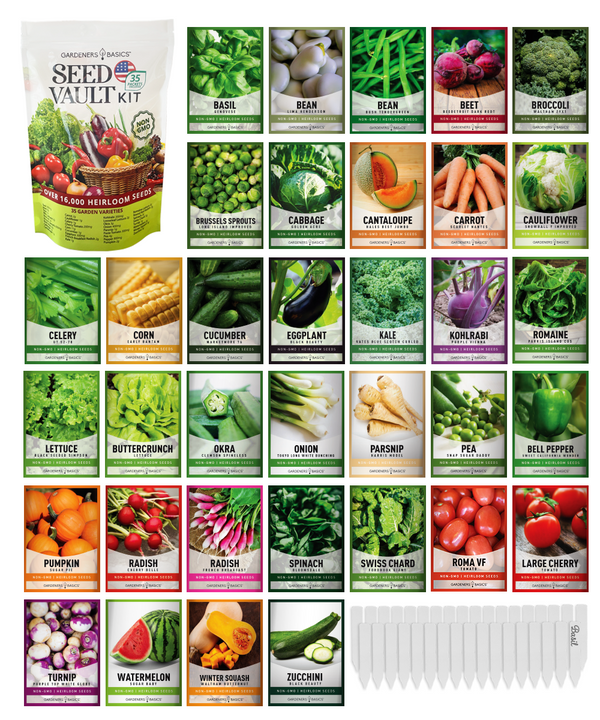
$29.95
$49.95
Ultimate Survival Seed Vault: 16,000+ Non-GMO Heirloom Vegetable Seeds for Emergency Preparedness Introducing the Seed Vault Kit, your all-in-one solution for emergency preparedness and sustainable gardening. This premium seed kit contains over 16,000 non-GMO, Heirloom, Non-Hybrid, and Open Pollinated seeds,… read more



